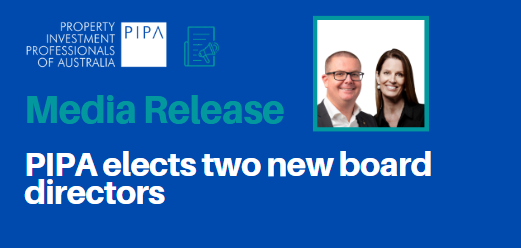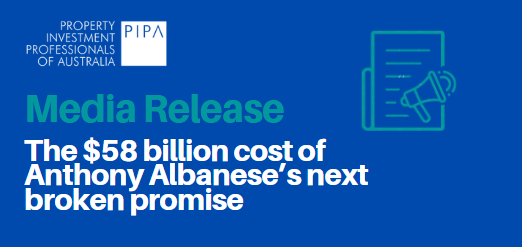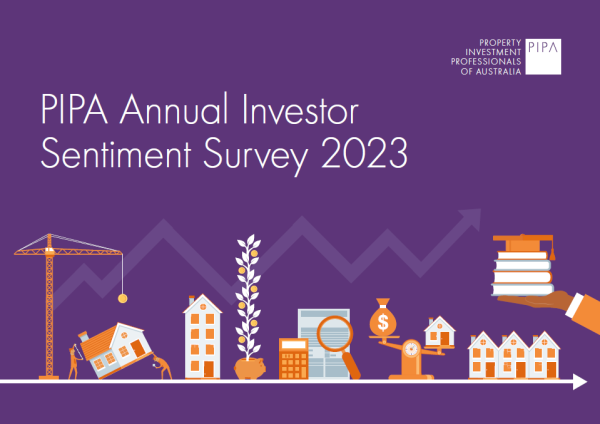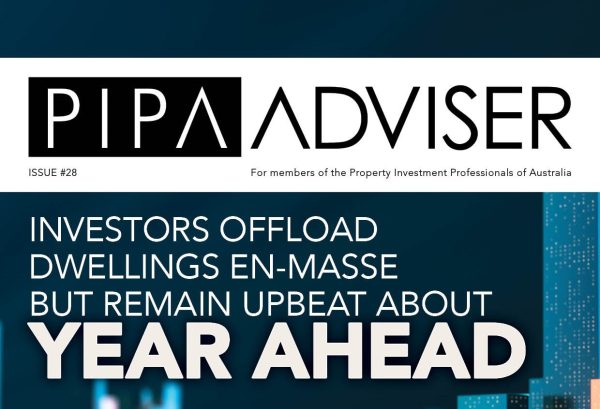Governments passing the buck on housing crisis while raking in tens of billions in property taxes
May 2024Karen Millers
Categories
Location ReportsMedia releasesNational market updatesPersonal advisersPIPA AdviserPIPA Annual Investor Sentiment SurveysPIPA Member ProfilesPIPA video updatesPIPA webinarsPodcastsProperty advisersProperty newsLatest Articles
Monthly rise in dwelling approvals below national housing target
As some investors decide to leave Victoria, first homebuyers are getting their foot in the door
Property taxes from the states are surging and there may be more to come
PIPA Member Profile | Margaret Lomas, Destiny Financial Solutions
Property investors are fleeing Victoria over soaring land taxes
Governments are using private investors as scapegoats for a shocking underinvestment in social housing while raking in tens of billions of dollars in property taxes each year, according to the Property Investment Professionals of Australia (PIPA).
Right now, about 175,000 households are on waiting lists for public or community housing across Australia, up by 20,000 since 2014, data analysis by PIPA shows.
More than a third of people (35 per cent) seeking urgent assistance from governments are turned away, up sharply from 29 per cent in 2016.
Despite that, Australia’s total social housing stock of 430,000 dwellings has barely changed in the past 25 years.
“What has shifted is the number of people needing housing, with the country’s population surging by 33 per cent in the past two decades,” PIPA Chair Nicola McDougall said.
Data from the Australian Institute of Health and Welfare shows the number of social housing dwellings as a proportion of total housing stock “has seen a steady decline” over the past decade, slumping to 4.1 per cent in 2022.
However, State and Local Governments collectively raked in some $68 billion in property taxes, including stamp duty and land tax but not Capital Gains Tax, according to the ATO Taxation Revenue for the 2022/2023 financial year – a staggering increase of 73 per cent over the past decade.
During the same year, state and local governments invested just 1.4 per cent of total revenue into housing and community amenities, according to the ATO.
The AIHW data shows the proportions of social housing compared to total housing stock fell to less than five per cent in the four biggest states – 4.7 per cent in New South Wales, 2.9 per cent in Victoria, 3.5 per cent in Queensland, and 3.9 per cent in Western Australia, each recording falls in the previous 10 years.
In Victoria, where private investors have been the punching bag of a high-taxing state government, the multibillion-dollar Big Housing Build program has been a spectacular failure.
In the four years to mid-2022, the Victorian Government managed to boost its social housing stock by just 74 dwellings.
“During that same period, the bloated waiting list of desperate Victorians needing a roof over their heads has surged to 57,672 households,” Ms McDougall said.
While talking about fixing the housing crisis, some major state governments have been quietly selling off social housing stock to make a profit, leaving people out in the cold.
In the decade to 2021, the New South Wales Government pocketed $3 billion by liquidating chunks of its stock, while failing to meet its target for reinvestment.
And in Queensland, more than 47,000 households are on waitlists for social housing, but advocacy groups say closer to 100,000 families are in need.
“If you want to know why Australia is in such a mess and why so many can’t afford a home, you only need to look at how much the population has grown and the sharp rise in people in need of support and compare it to investment in social housing.”
As the country’s housing crisis shows no signs of easing, Ms McDougall said politicians continue to focus on penalising and demonising property investors, who provide more than 80 per cent of the homes occupied by Aussies renters.
“Instead of offering meaningful solutions, getting desperately needed supply into the market, and supporting those in the community doing it toughest, governments are passing the buck,” she said.
Things only look set to worsen, with research from the UNSW City Futures Research Centre showing 640,000 families across Australia have ‘unmet housing needs’ or forced to live in unsuitable housing due to cost pressures.
Based on projected population growth, the study warns that figure could explode to 940,000 households by 2041.
ENDS
For more information or to organise an interview with Ms McDougall please contact:
Bricks & Mortar Media | media@bricksandmortarmedia.com.au




